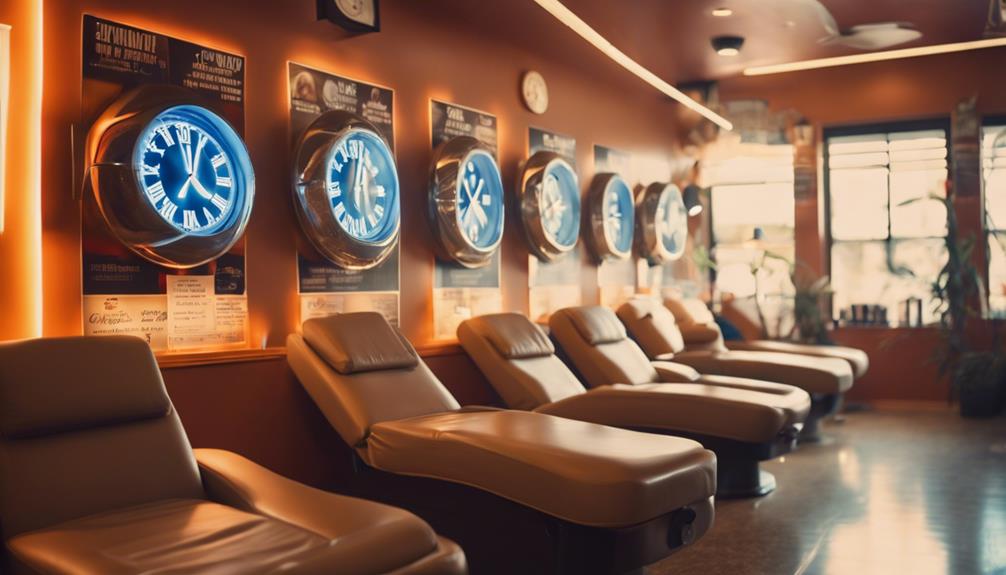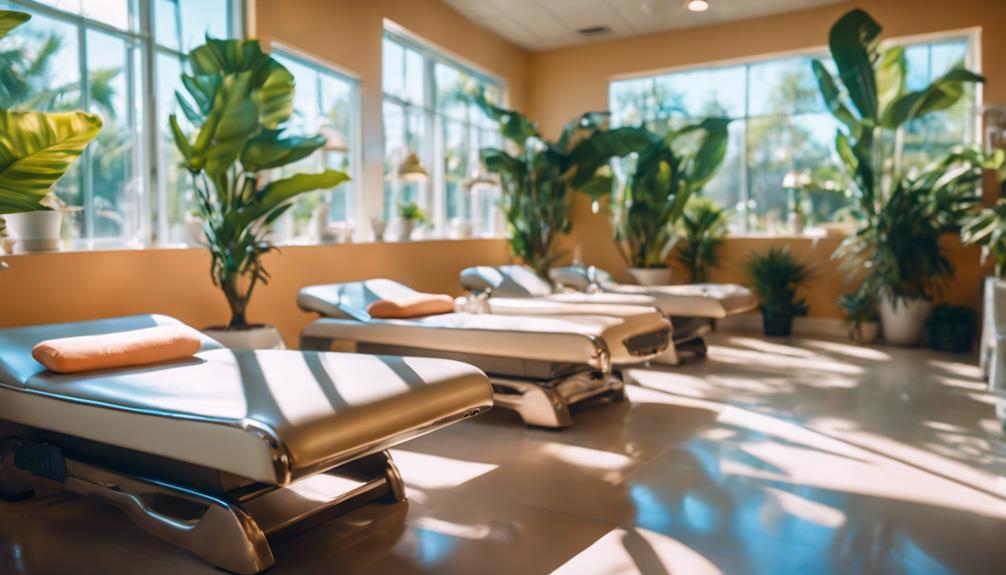Mastering the art of tanning bed lotion starts with understanding your skin type. You need to prep your skin by exfoliating and showering before applying lotion. Choose a high-quality, indoor-specific tanning lotion for the best results. Apply it in circular motions, focusing on dry areas, and allow it to absorb before hitting the tanning bed. Start with short sessions and gradually increase the time to avoid burns. Always wear protective eyewear and moisturize afterward to maintain your tan. To enhance your tanning experience even further, stick around for more tips and tricks that will elevate your tanning game.
Key Takeaways
- Choose indoor tanning lotions designed for optimal results, avoiding generic products that may irritate the skin.
- Exfoliate and moisturize the skin before application to ensure even absorption and a smoother tan.
- Apply lotion in circular motions, focusing on dry areas like elbows and knees to prevent patchiness.
- Start with short tanning sessions to assess skin response, gradually increasing duration for best outcomes.
Skin Type Assessment
Understanding your skin type is essential for achieving a beautiful, even tan while minimizing the risk of burns.
If you have pale skin, you'll likely burn quickly, so proceed with caution.
Light brown or olive skin can tan gradually, but you should still be mindful of potential burns.
If your skin is medium brown, you'll likely bronze rather than burn, especially if you have darker features.
Rich brown or bronze skin is naturally suited for tanning, but you still need to monitor your exposure.
Knowing your skin type helps you choose the right products and develop a tanning strategy that maximizes results while keeping your skin healthy and protected.
Always listen to your skin and adjust your approach accordingly.
Pre-Tan Preparation
Preparing your skin before tanning is essential for achieving a smooth and even glow. Start by exfoliating to remove dead skin cells, which helps the tanning lotion adhere better. Then, take a shower to open your pores, enhancing absorption. Don't forget to apply a gentle lotion to sensitive areas like your eyelids and lips, and use SPF lip balm for extra protection. Finally, always wear protective eyewear during your session.
| Step | Action | Purpose |
|---|---|---|
| Exfoliate | Remove dead skin | Better lotion adhesion |
| Shower | Open pores | Enhance absorption |
| Apply lotion | Protect sensitive areas | Prevent irritation |
| Use lip balm | Protect lips from UV rays | Avoid chapping |
| Wear eyewear | Shield eyes from harmful rays | Prevent eye damage |
Choosing Tanning Bed Lotion
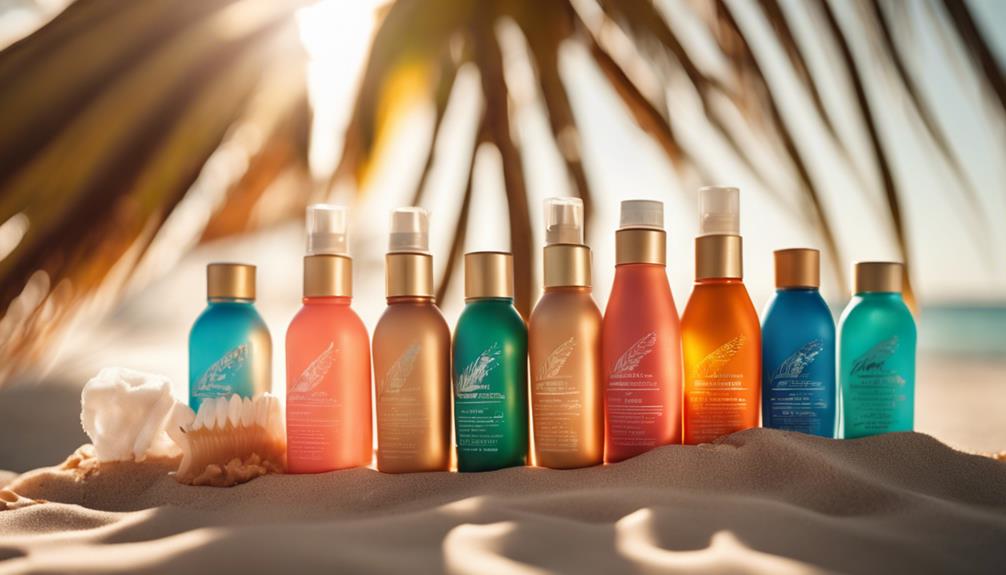
When selecting a tanning bed lotion, prioritize products specifically formulated for indoor tanning to guarantee ideal results. These lotions contain ingredients designed to enhance your tan while protecting your skin from potential damage.
Look for reputable brands known for their effectiveness, and check labels for specific benefits like bronzing, intensifying, or cooling effects. Avoid generic lotions that aren't meant for tanning beds, as they can lead to poor results or skin irritation.
Consider your personal preferences too—choose scents and textures that you enjoy. Remember, the right tanning bed lotion can make all the difference in achieving that beautiful, sun-kissed glow you desire, so take your time in making the best choice for your skin type.
Application Techniques
To achieve an even and beautiful tan, apply your tanning lotion in circular motions, ensuring full coverage across all areas of your skin.
Start by cleansing and exfoliating your skin to promote better absorption. Focus on dry areas like elbows and knees, as they tend to absorb more product and can appear darker if neglected.
After applying, allow the lotion to absorb for about a minute before hitting the tanning bed. Don't forget to wash your hands thoroughly to avoid stained palms.
If you notice any uneven patches, reapply a small amount of lotion to those areas.
Tanning Session Strategy
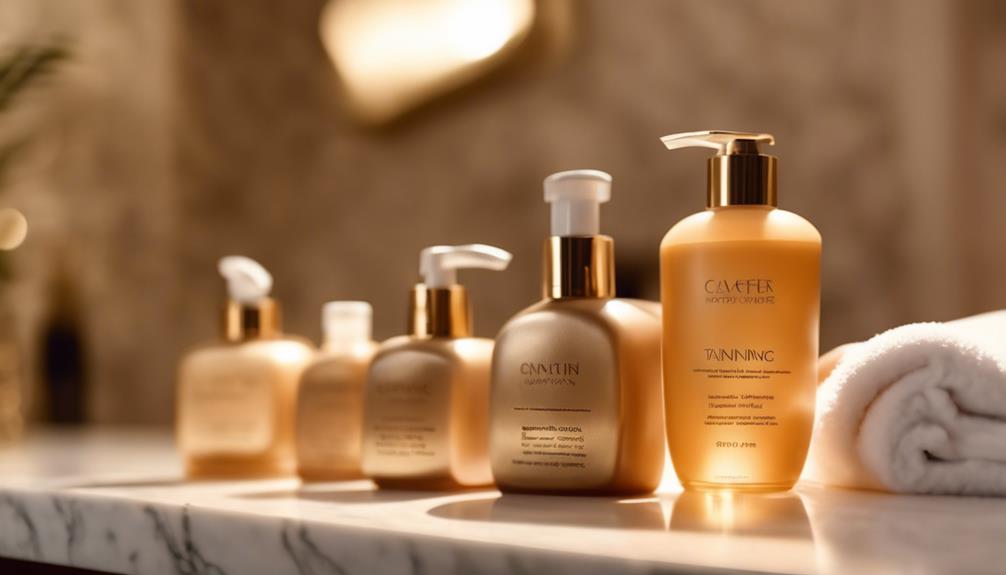
Applying the right techniques is just the beginning; planning your tanning sessions effectively guarantees you achieve a beautiful, lasting tan while minimizing the risk of skin damage.
Start with short sessions to see how your skin reacts, gradually increasing exposure time. Using a timer helps you keep track, ensuring you don't overdo it.
It's essential to allow your skin to rest between sessions, giving it time to recover and develop an even tone.
When you do tan, apply your lotion evenly to avoid patchiness and enhance results.
Remember, consistency is key; regular sessions spaced appropriately will yield the best outcome.
With careful planning, you can enjoy a gorgeous tan without compromising your skin's health.
Safety Precautions
Prioritizing safety during tanning sessions protects your skin and enhances your tanning experience.
Always follow the recommended guidelines for tanning bed usage to avoid skin damage. Limit your sessions to prevent overexposure; starting with shorter durations lets you gauge your skin's response.
Remember to wear protective eyewear to shield your eyes from harmful UV rays. Keep an eye on your skin for any adverse reactions, like redness or irritation, after each session. If you notice anything unusual, it's best to consult a professional for personalized advice.
Staying informed about your skin type and adjusting your tanning strategy accordingly will help you achieve a beautiful tan while prioritizing your health and safety.
Post-Tan Care
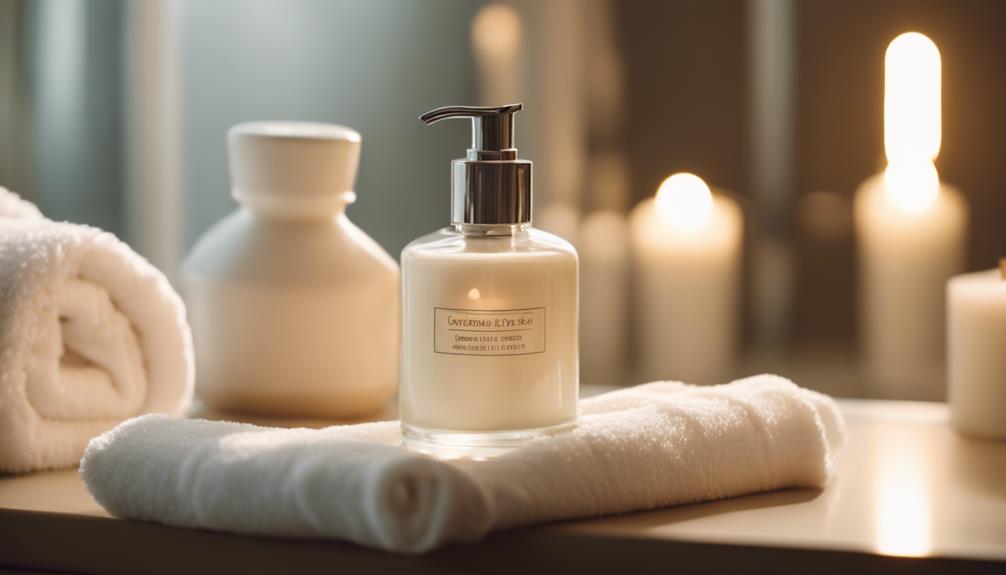
Post-tan care is essential for locking in moisture and maintaining your beautiful glow after a tanning session.
Right after tanning, apply a high-quality moisturizer to hydrate your skin and prevent dryness. This step helps seal in the tan and keeps your skin looking radiant.
Wait 2-3 days before your next tanning session to give your skin time to recover.
When showering, exfoliate gently to maintain an even tan without stripping it away.
Don't forget to reapply SPF lip balm to protect your lips from UV rays.
Adjust your lotion routine based on how your skin feels post-tan, ensuring you keep it nourished and glowing.
Follow these steps, and you'll enjoy your tan longer and healthier.
Common Mistakes to Avoid
Many people overlook key steps that can affect their tanning results, leading to common mistakes that should be avoided for a perfect glow. To guarantee a successful tanning session, keep these mistakes in mind:
- Skipping Protective Eyewear: Always wear goggles to protect your eyes from harmful UV rays.
- Neglecting Lip Protection: Don't forget to apply SPF lip balm; chapped lips can ruin your tanning experience.
- Using the Wrong Lotion: Choose a lotion specifically designed for indoor tanning—generic lotions won't give you the desired results.
Frequently Asked Questions
Can I Mix Different Tanning Lotions for Better Results?
Mixing different tanning lotions isn't recommended. You might not achieve the desired results, and it could cause uneven tanning or skin reactions. Stick to one quality lotion for the best, most consistent outcome.
How Often Should I Replace My Tanning Bed Lotion?
You should replace your tanning bed lotion every six to twelve months, or sooner if you notice a change in texture or scent. Fresh lotion provides better results and guarantees effective tanning without skin irritation.
Are Natural Tanning Lotions Effective Compared to Traditional Ones?
Imagine basking under the sun on a perfect summer day. Natural tanning lotions can be effective, but their results may vary compared to traditional ones. You should always check ingredients and user reviews before choosing.
What Are the Potential Side Effects of Tanning Bed Lotions?
Tanning bed lotions can cause skin irritation, allergic reactions, or breakouts. You might experience uneven tanning or increased sensitivity to UV exposure. Always patch-test new products to avoid unexpected side effects during your tanning sessions.
Can I Use Tanning Bed Lotion on My Face?
Yes, you can use tanning bed lotion on your face, but choose a product designed for facial application. Your skin's thinner, so opt for gentle formulas to avoid irritation and guarantee an even tan.
Conclusion
Now that you're armed with the knowledge to master tanning bed lotion, think of your tanning journey like crafting a masterpiece—each step adds to the final glow.
By understanding your skin type, prepping properly, and choosing the right products, you'll achieve that sun-kissed look safely and effectively.
Remember, the key to a flawless tan lies in both technique and care.
So, get ready to shine, and enjoy every moment of your tanning experience!

